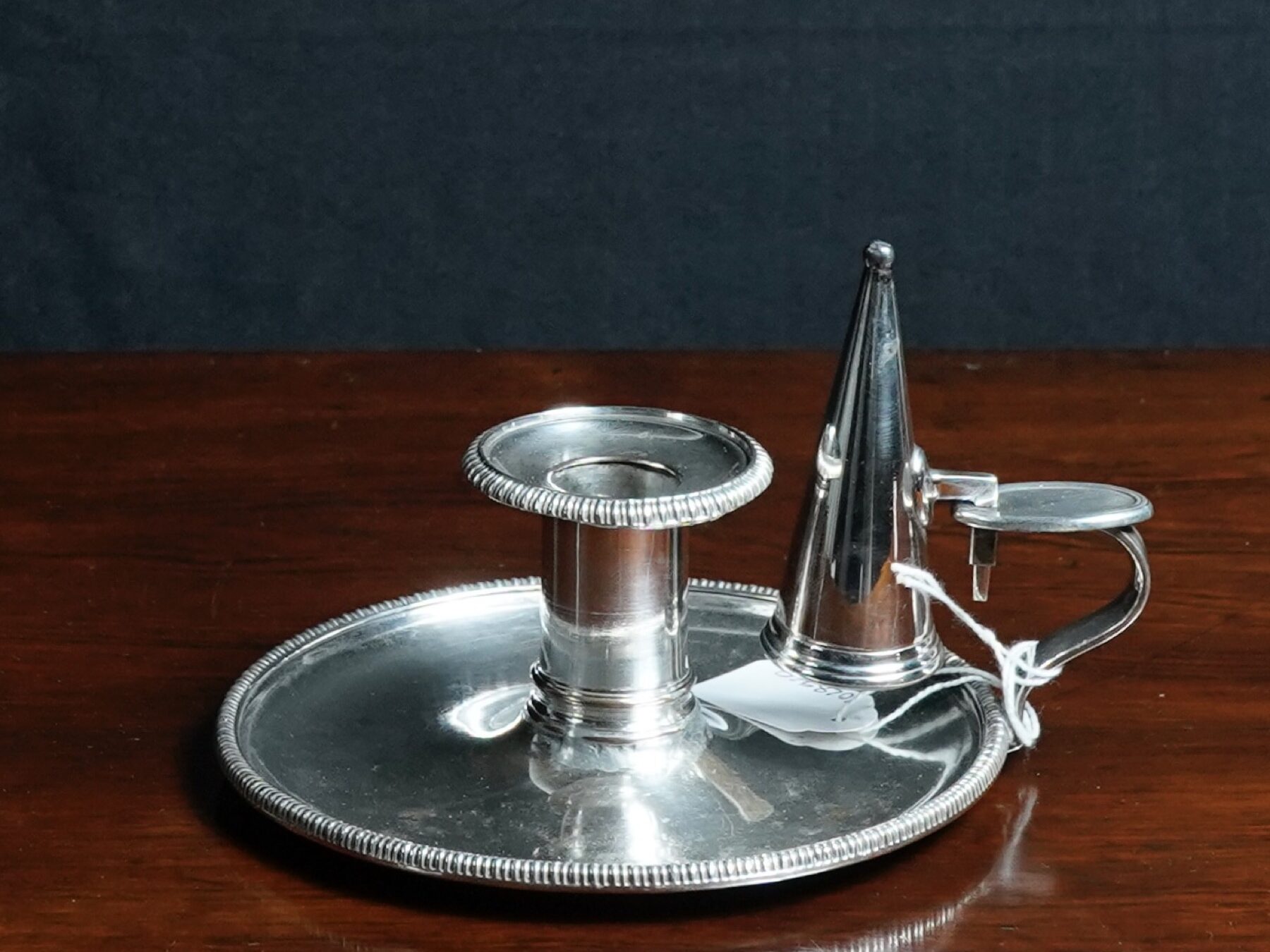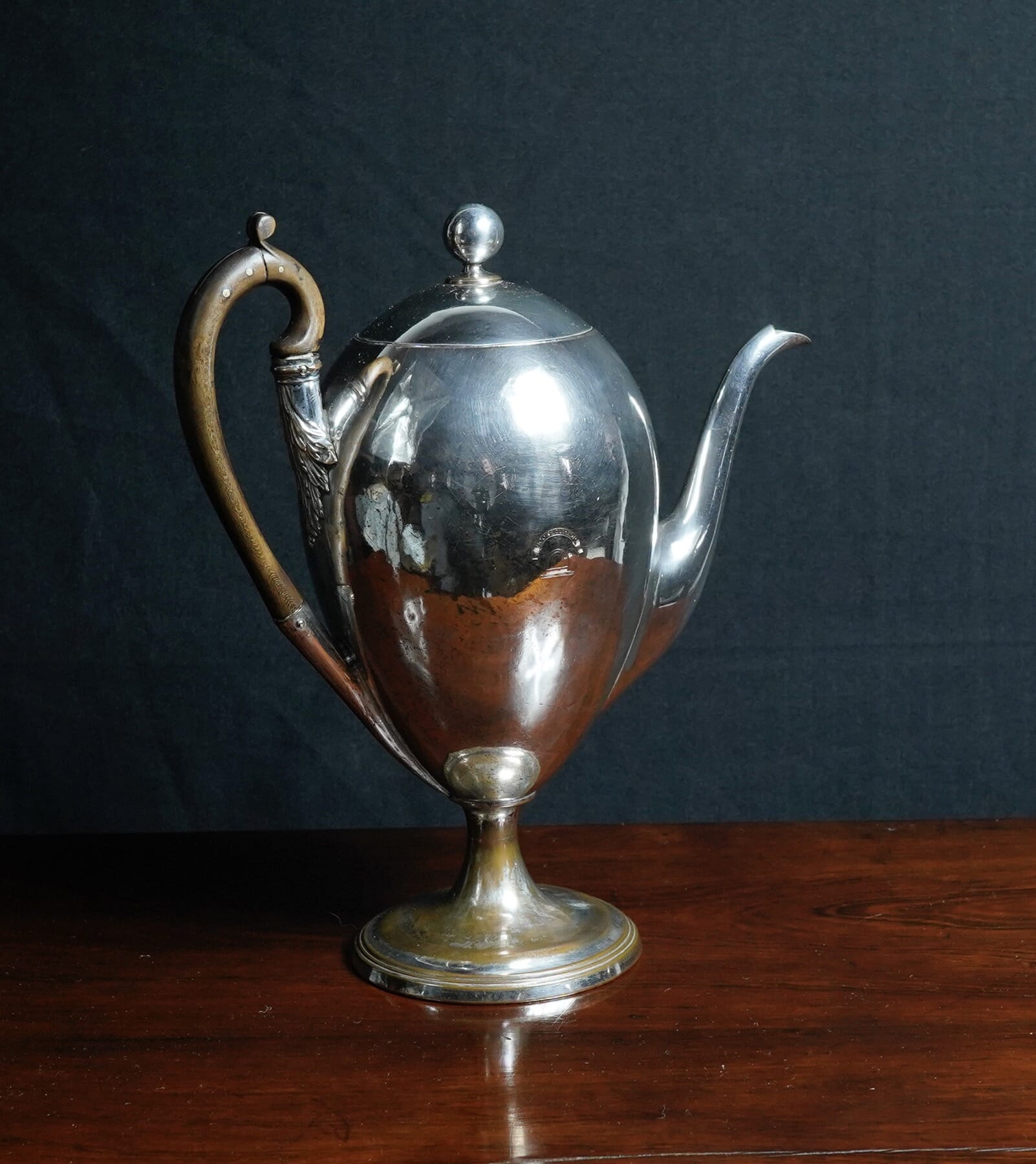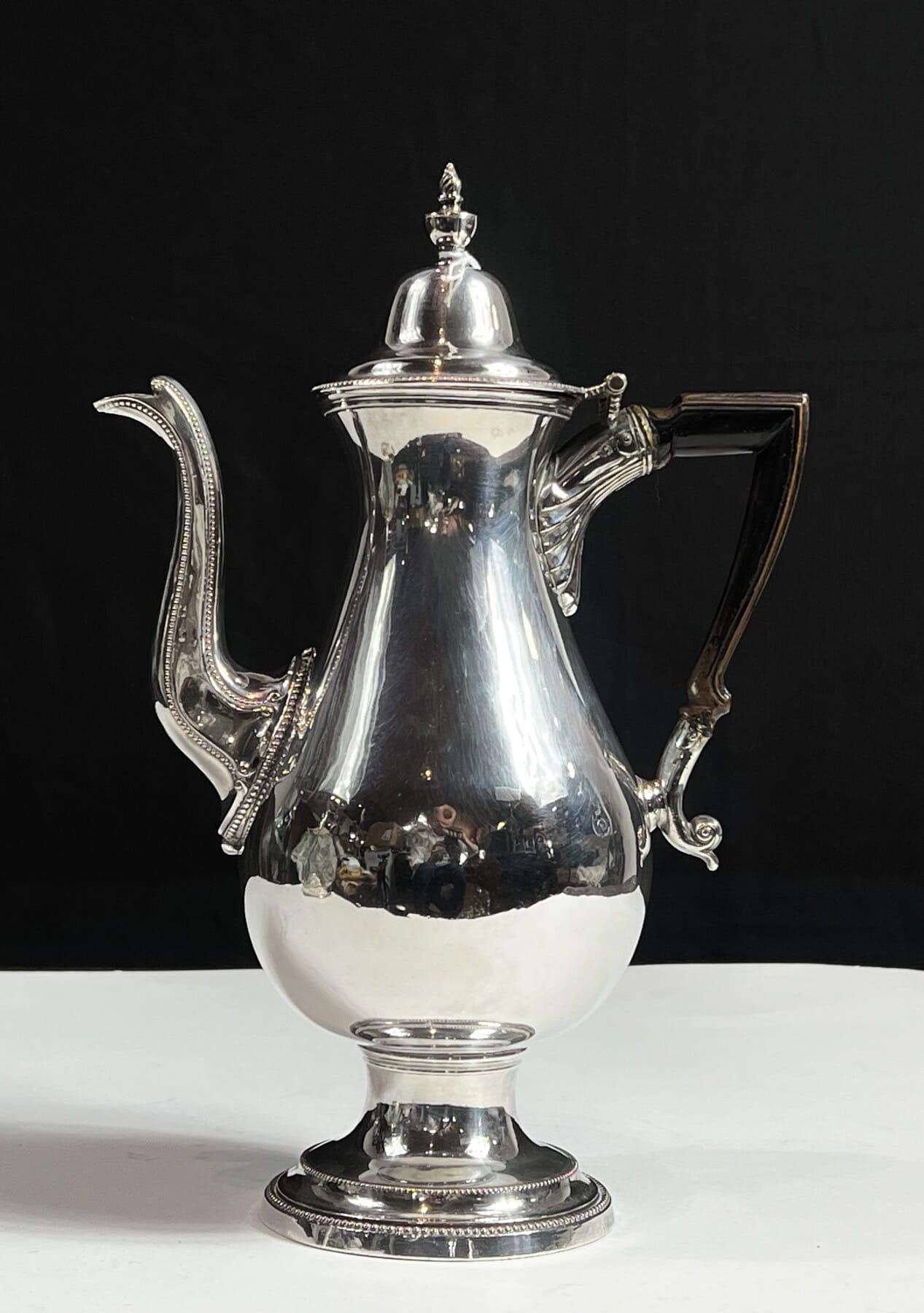This remarkable piece of design is Old Sheffield Plate- the laboriously-constructed technique used before silver plating was invented.
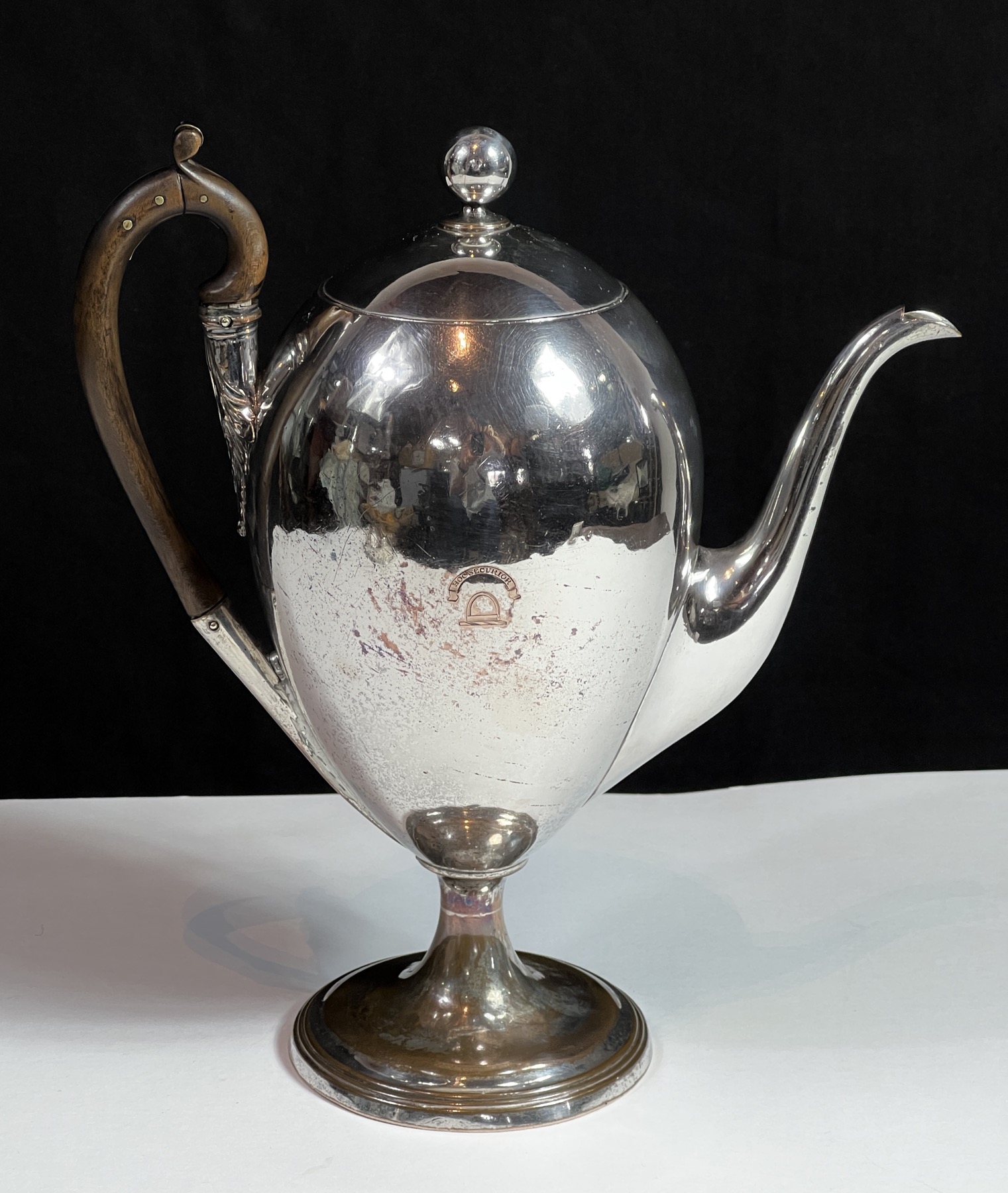
The simple form and lack of fussy details is a style more usually associated with the Art Deco period a century later- but here it is, in the early 19th century.
This is the essence of what Art Deco later copied to great effect.
Chronologically, in the evolution of the coffee pot, if you look at the earlier 18th century pieces and then the mid-19th century examples that came later, you can see what a special example this is, with its simple elegance.
There’s a crest on the side of the coffee pot – and it’s alway fun to find the original owner. Who were they? What did they do? and where did they use this remarkable piece?
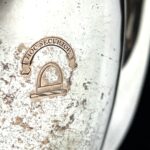
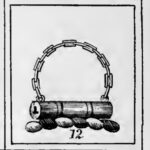
The curious stirup-like symbol has the motto “HOC SECURIOR” , meaning ‘safer by this’. It is actually a middle-ages ‘Fetterlock’, used to lock a horse against a post or tree. Several families were awarded the use of this in their heraldic crests, but only one conforms to the motto – the Griersons of Dumfriesshire. A quick browse through ‘Fairburn’s Crests ‘ confirms this to be the crest of the Grierson Clan of Scotland.
They have a long & proud part to play in Scottish history, closely associated with the powerful Douglas clan. They supported James IV, and suffered the same fate as him at the battle of Flodden in 1513. They were a ‘Jacobite’ clan: 200 years later, they supported James VI of Scotland, receiving a knightship in 1608. After the accession of James VII of Scotland (James II of England), the current clan leader, Robert Grierson, was made the Baronet of Lag. During the ‘Glorious Revolution’, they opposed the Prodestant William & Mary’s claim on the throne.

When we examine this colourful history of the Grierson clan, we can narrow down the owner of this elegant coffee pot: Sir Robert Grierson, 5th Baronet of Lag, 1733- 1839. In his 106 years he saw a lot of changes – and after his initial military service, drew his entitled government ‘half-pay’ for the next 76 years!
His 1839 obituary in The Times is fascinating, declaring he was was “…fond of excercise in the open air, excelled in all sporting and athletic arts, and perhaps trod the moors consecutively for a longer period than any other man of rank and fortune that ever existed. His constitution was remarkably sound and vigorous; to sickness he was a stranger; never was confined to bed a single day, and only a few hours preceding his death talked of taking his usual carriage drive.”
He “…mingled little in public business, took no prominnent share in politics, avoided revelry and ostentation, managed with discretion the affairs of his estate, was of easy access, and lived beloved and respected by all, near or at a distance, whether of his own or inferior rank, down to the humblest of his tradesmen and servants…”.
So this very simple no-frills form of coffee pot was the perfect choice to be used by this no-frills Scottish country gentleman, on those chilly mornings in the impressive stone towerhouse he inhabited…… Rockhall, a 16th century tower house near Dumfries, which is now a superb Bed & Breakfast!

It’s interesting to see the shape illustrated in the definitive book on Old Sheffield Plate by Bradbury, where a series of ridges cause it to become a ‘beehive’. Our example is a more refined version, and we can positively attribute it to the same firm, Roberts, Cadman & Co of Sheffield.
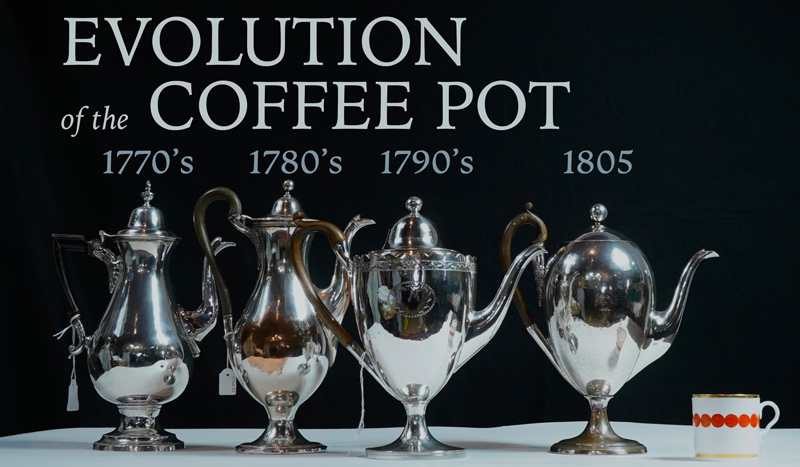
The group of coffee pots in today’s ‘Fresh Stock’ illustrate the change in fashion towards the end of the 18th century. Anyone familiar with Sterling Silver versions will see it’s exactly the same evolution; the Rococo angular forms giving way to the streamlined Classical forms at the turn of the 18th century. The 1805 Roberts Cadman & Co example is surely the most elegant design to appear – if we continued into the 19th century, before long the Regency and Victorian periods re-visited elaborate scrollwork and cumbersome decoration, and it isn’t until the end of the century that these pure forms are re-visited.

Another interesting Old Sheffield Plate example to be offered in this ‘Fresh Stock’ is a wine coaster, pierced with undulating panels in the Neo-Classical ‘Adams’ style. It has a most interesting hallmark, very much in the manner of a Sterling Silver hallmark, but lacking the lion of Sterling Standard. A look through Bradbury shows up part of the mark in his ‘Unknown Marks’ section – but our mark has an extra clue: the initials of the maker, ‘HF’, and a ‘G’. When we look back a few pages, we find this combination of marks attributed to H. Freeth of Upper Priory, Sheffield, a ‘Plater’. So this fascinating piece is ‘documentary’, as it ties together the unknown maker with a known maker. Bradbury published his book in 1912, and it was re-printed as the most reliable source on the subject in 1968; time for another update?
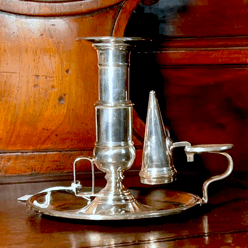
The ‘chambersticks’ are interesting. The Chamberstick was a candle holder with a drip-pan and attached snuffer, suitable for taking to your chamber from the parlour when you retired for the night. One example we have bears a makers mark – not common – which shows it to be the work of the esteemed Mathew Boulton himself, the industrialist genius responsible for the massive expansion of Sheffield in the later 18th century and instigator of the whole Sheffield Plate industry.
The other is a rare ‘telescopic’ version, which allowed you to raise the candle up higher when it burnt down.
